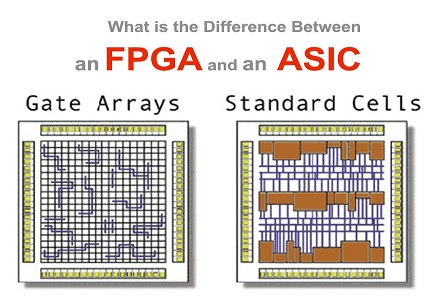Time: 2025-01-21 11:15:46View:
ASIC (Application-Specific Integrated Circuit) and FPGA (Field-Programmable Gate Array) are both types of hardware used in various computing and electronics applications, but they serve different purposes and have distinct characteristics:

Cost: FPGAs are more cost-effective than ASICs for low-to-medium volume production or for prototyping. However, they can be more expensive than ASICs in terms of performance for large-scale deployment due to their lower efficiency.
The key differences between ASIC (Application-Specific Integrated Circuit) and FPGA (Field-Programmable Gate Array) lie in their design, flexibility, performance, and use cases. Here’s a clear comparison:
FPGA: Can be reprogrammed multiple times to perform different tasks or modify its functionality.
| Feature | ASIC | FPGA |
|---|---|---|
| Customization | Fixed for a specific task | Reprogrammable, flexible for multiple tasks |
| Performance | Optimized for a specific application | Generally slower but can be optimized |
| Power Efficiency | Highly efficient for its task | Less efficient than ASIC for the same task |
| Development Time | Long, custom design process | Fast, can be reprogrammed after manufacturing |
| Cost | High initial cost, low cost at scale | Cost-effective for low-volume and prototyping |
| Use Cases | Mass production, specific applications | Prototyping, custom tasks, low-volume design |
| Reprogrammability | No | Yes |
ASIC: Highly optimized, fixed for a particular function, cost-effective for high-volume production. Best for high-volume, task-specific applications where performance, efficiency, and cost per unit are critical.